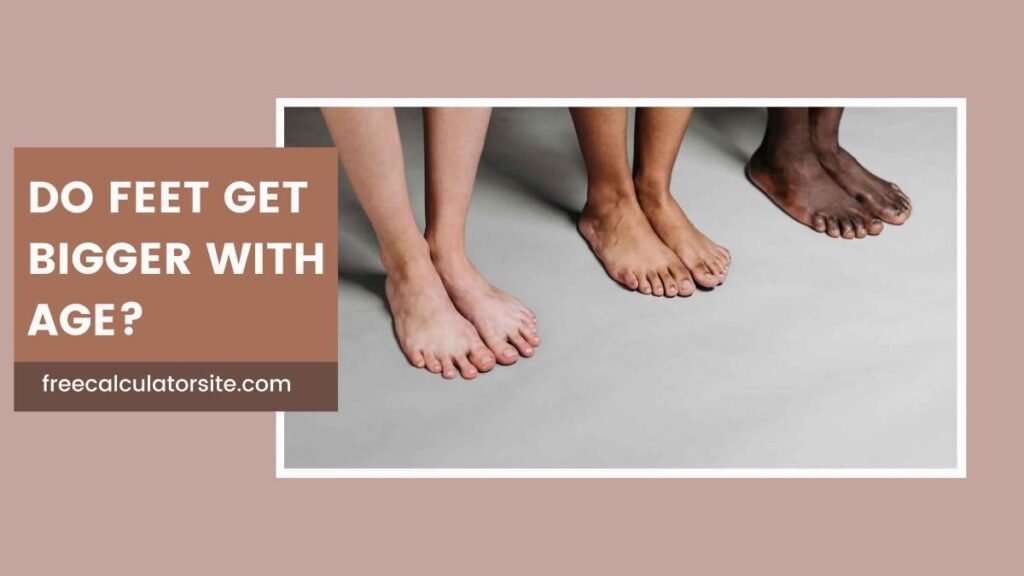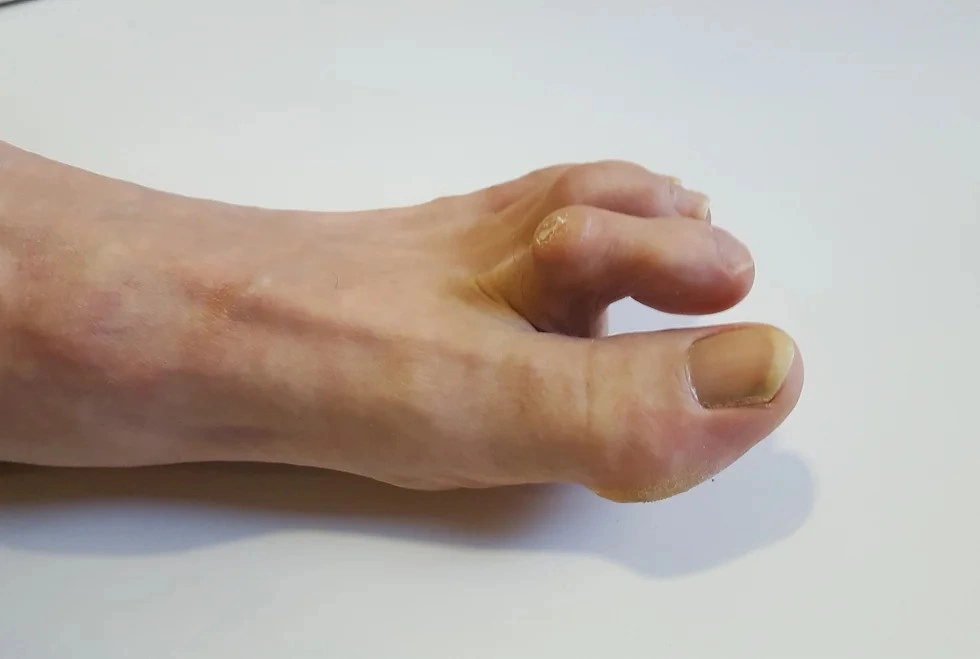Last updated on October 10th, 2024 at 07:56 pm

Aging is an inevitable part of life, and with it comes many changes to the human body.
While most people are familiar with visible changes like wrinkles or graying hair, one often overlooked area that experiences noticeable shifts is the feet.
So, do feet really get bigger with age? The short answer is yes—but the reasons why, and how this occurs, might surprise you.
Understanding Foot Anatomy
To understand how feet change with age, it’s essential to grasp their anatomy.
Each foot is a complex structure, consisting of 26 bones, 33 joints, and over 100 muscles, tendons, and ligaments.
This intricate system works in harmony to support the body’s weight, balance, and movement.
Over time, however, these components begin to wear down and lose their elasticity, contributing to changes in the feet.
The Process of Foot Enlargement

As people age, several factors can cause the feet to increase in size:
1. Flattening of the Arches
The arch of the foot plays a significant role in supporting the body and absorbing shock during movement.
With age, the ligaments and tendons that maintain the arch’s shape lose their elasticity.
This process, known as “fallen arches” or flat feet, causes the foot to elongate and spread out, giving the appearance of a larger foot.
For some, this change can be gradual, while others might notice a more dramatic shift in foot size over time.
2. Loss of Fat Padding
The soles of the feet have natural fat pads that cushion the impact of walking, running, and standing.
As people age, these fat pads diminish, which can make the foot feel wider and less cushioned.
Without the same level of support, the bones of the feet can splay outward, resulting in a wider foot.
3. Changes in Bone Structure
The bones in the feet undergo gradual remodeling throughout life.
With age, the bones may become less dense due to conditions like osteoporosis or general wear and tear.
Over time, this can cause subtle shifts in the alignment of the foot bones, leading to changes in the overall size and shape of the foot.
4. Swelling (Edema)
Many older adults experience swelling in the feet and ankles, particularly after prolonged standing or due to conditions like heart disease, kidney problems, or poor circulation.
This swelling can make the feet temporarily larger, although it’s not a permanent change in foot size.
Nonetheless, persistent edema can alter the way shoes fit and give the impression of larger feet.
Also Read: Do Ears Grow With Age?
How Much Do Feet Grow?
While feet don’t grow in the same way during adulthood as they do in childhood, the length and width of the foot can increase slightly over the years.
It’s not uncommon for individuals to go up half a shoe size or more as they enter their 40s, 50s, and beyond.
By the time a person reaches their senior years, they might find they need a full shoe size larger than what they wore in their younger days.
Gender Differences in Foot Growth
Men and women may experience changes in foot size differently. Women, in particular, are more likely to experience foot enlargement as they age, especially after childbirth.
Pregnancy can permanently alter the foot’s size and shape due to hormonal changes and increased weight, which puts additional strain on the ligaments and tendons in the feet.
Additionally, women tend to experience more significant changes during menopause due to the decline in estrogen, which affects bone density and ligament elasticity.
Men, on the other hand, may also see changes in foot size, but often to a lesser degree compared to women.
Nevertheless, both genders can expect some degree of foot enlargement as they age.
The Role of Footwear
Ill-fitting or poorly designed shoes can exacerbate foot problems over time.
Many people continue wearing the same shoe size into their older years, even as their feet change shape.
Shoes that are too tight can lead to a variety of foot issues, including:
- Bunions: These painful, bony bumps form on the side of the big toe and can cause the foot to appear wider.
- Hammertoes: Ill-fitting shoes can cause the toes to bend unnaturally, leading to a condition called hammertoes, which alters the shape of the foot.
- Calluses and Corns: These thickened areas of skin result from pressure and friction, often caused by shoes that no longer fit properly.
As feet grow or change with age, it’s crucial to wear shoes that provide adequate support and room for movement.
Wearing the wrong size can cause pain and long-term foot issues.
Also Read: Can eye color change with age?
Health Conditions That Affect Foot Size
Several medical conditions can impact the size and shape of the feet as people age.
Some of the most common include:
1. Diabetes
Diabetes can lead to poor circulation and nerve damage in the feet, known as diabetic neuropathy.
This condition can cause swelling and changes in the structure of the foot. Over time, diabetics may notice their feet becoming larger or misshapen.
2. Arthritis
Arthritis is common in older adults and can cause inflammation in the joints of the feet, leading to swelling and changes in foot shape.
Rheumatoid arthritis, in particular, can lead to significant deformities in the toes and the overall structure of the foot.
3. Obesity
Excess weight puts additional pressure on the feet, which can cause the arches to flatten and the foot to splay.
Obese individuals are more likely to experience foot enlargement due to the added strain on the ligaments and tendons.
Maintaining Foot Health with Age
While foot size may increase with age, there are steps individuals can take to maintain foot health and comfort:
- Wear Proper Footwear: Invest in shoes that offer ample support, cushioning, and room for the toes to move. Look for shoes with adjustable straps or laces to accommodate changes in foot size.
- Stretch Regularly: Foot and calf stretches can help maintain flexibility and prevent tightness in the muscles and tendons of the feet.
- Maintain a Healthy Weight: Keeping a healthy body weight can reduce pressure on the feet and slow down changes in foot size and shape.
- Visit a Podiatrist: Regular check-ups with a podiatrist can help address foot issues early on and provide guidance on managing foot health as you age.
- Foot Exercises: Simple exercises like toe curls, ankle rotations, and heel lifts can strengthen the muscles and ligaments in the feet, helping to maintain their shape and function.
Conclusion
While feet don’t necessarily “grow” in the same way as in childhood, they do get larger with age due to a variety of factors such as flattening arches, reduced fat padding, bone changes, and swelling.
By understanding these changes and taking steps to care for your feet, you can maintain comfort and mobility well into your golden years.
So, if you notice your shoes feeling a bit tighter as the years go by, remember that it’s a natural part of aging—and an excellent excuse to treat yourself to a new pair of shoes!

Sayantika Karmakar provides expert insights on financial calculators in her blog posts.
